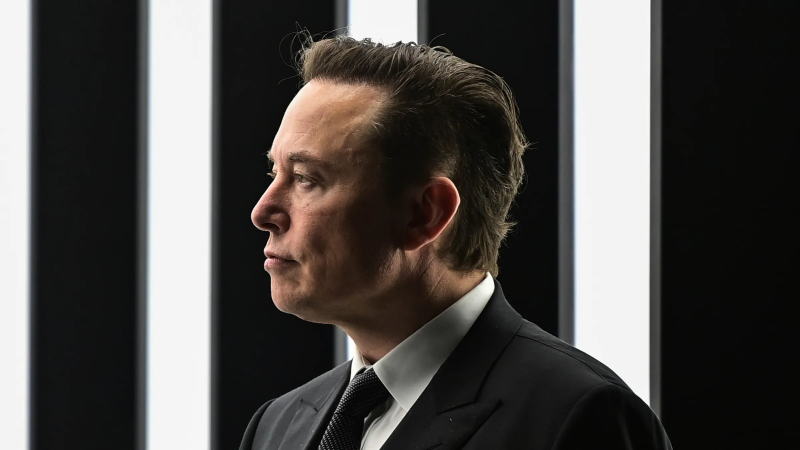Video shows first Neuralink brain chip patient playing chess by moving cursor with thoughts
The first patient to get a cybernetic implant from Elon Musk's Neuralink company appeared to move a cursor using his brain to play online chess in a video released by the company.
In a livestream X, formerly Twitter on Wednesday, Noland Arbaugh moves the cursor on a computer without using any physical tools. Arbaugh, 29, said he used his mind to play the online chess game.
"It was like using the force," Arbaugh said.
Arbaugh has been paralyzed from the shoulders down after a "freak" diving accident eight years ago, he said in the live stream.
In the video, Arbaugh said he loved playing chess but it hasn't been something he was able to do often in the past few years.
"Now it's all being done with my brain. You can see the cursor moving around the screen, that's all me," he explained.
Who is Noland Arbaugh?
Arbaugh, an Arizona native, was a student and athlete at Texas A&M when he became paralyzed, according to a GoFundMe that was set up in 2017 to help him get a handicapped access van.
According to the fundraiser, Arbaugh was working as a summer camp counselor for children when he got into the accident that left him quadriplegic in 2016.
"I'm paralyzed from below the shoulders. I have no sensation or movement below my level of injury, so below my shoulders," Arbaugh said in the livestream.
An avid gamer, Arbaugh said Neuralink gave him the ability to play games again, including Civilization 6, which he played for eight hours straight.
"I had basically given up on playing that game," he said in the video. "I just wasn't really able to play it as much as I wanted to and you all gave me that ability again."
Neuralink implant:First human to receive Neuralink brain implant is 'recovering well,' Elon Musk says
First patient to receive Neuralink chip
Arbaugh is the first person to use this new technology. In January, Musk announced that the first human to receive the brain chip was recovering well.
"Initial results show promising neuron spike detection," Musk said on X after the procedure.
During the livestream, Arbaugh said he had no issues following his surgery.
"The surgery was super easy," Arbaugh said in the livestreamed video. "I literally was released from the hospital a day later. I have no cognitive impairments."
However, Arbaugh said the technology is "not perfect" and they "have run into some issues."
"I don't want people to think this is the end of a journey because there are things to work out, but it's already changed my life," he said.
Clinical trials:Elon Musk's Neuralink chip is ready to embark on its first clinical trial. Here's how to sign up.
Neuralink technology aims to help paralyzed people
Neuralink's brain-computer interface, or BCI, would allow people to control a computer or mobile device wirelessly "just by thinking about it," according to the company's website.
In May, the tech startup owned and co-founded by Musk announced it received approval from the Food and Drug Administration to implant brain chips into humans.
The company announced in September that it received approval to recruit for the first-in-human clinical trial of its wireless BCI.
How does it work?
Musk said the product is called Telepathy. The goal of the new technology is to allow paralyzed people the ability to control a computer cursor or keyboard using just their thoughts.
"Imagine if Stephen Hawking could communicate faster than a speed typist or auctioneer. That is the goal," Musk said in a post on X, formerly Twitter.
The study uses a robot to surgically place the implant into a region of the brain that controls movement intention. After the N1 Implant has been surgically placed, it's supposed to record and transmit brain signals wirelessly to an app that decodes movement intention.
Neuralink's goal with its human trials is to eventually enable a person with paralysis to use a computer or phone with their brain activity alone. The N1 implant actually includes multiple chips, a wireless battery and other electronics hermetically sealed within a device about the size of a large coin.
Several dozen ultra-thin threads protrude from the implant; those go directly into the brain. Signals from the implant are sent via Bluetooth to, and decoded by, a brain-computer interface, which would allow a person to, for instance, control an onscreen cursor or move a robotic limb.
"The first thing that we're going after is a wireless implanted chip that would enable someone who is a … tetraplegic or quadriplegic to control a computer, or mouse, or their phone, or really any device … just by thinking. This obviously would be a massive enabler, make life way easier for them. I'd say it's like a Fitbit in your skull with tiny wires that go to your brain,” Musk said in an online chat in 2021.
Beyond helping paralyzed patients regain some mobility and communicate without typing, Neuralink's longer-term goals include helping restore full mobility and sight.

How is the Neuralink chip inserted into the body?
The surgical robot was created specifically to embed the implant and its 64 ultra-thin flexible connected threads upon which are 1,024 electrodes that record neural activity.
The robot has five built-in camera systems and uses optical coherence tomography for noninvasive imaging of brain tissue. The robot uses a needle as thin as a human hair, Neuralink's site says.
Contributing: Amaris Encinas and Mike Snider, USA TODAY
Disclaimer: The copyright of this article belongs to the original author. Reposting this article is solely for the purpose of information dissemination and does not constitute any investment advice. If there is any infringement, please contact us immediately. We will make corrections or deletions as necessary. Thank you.







